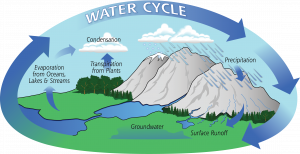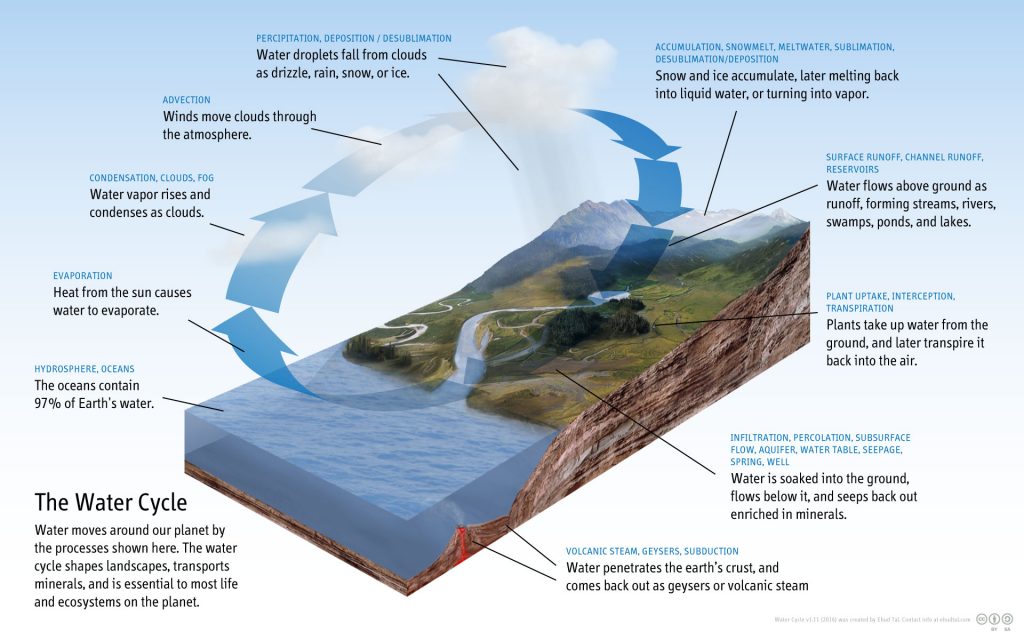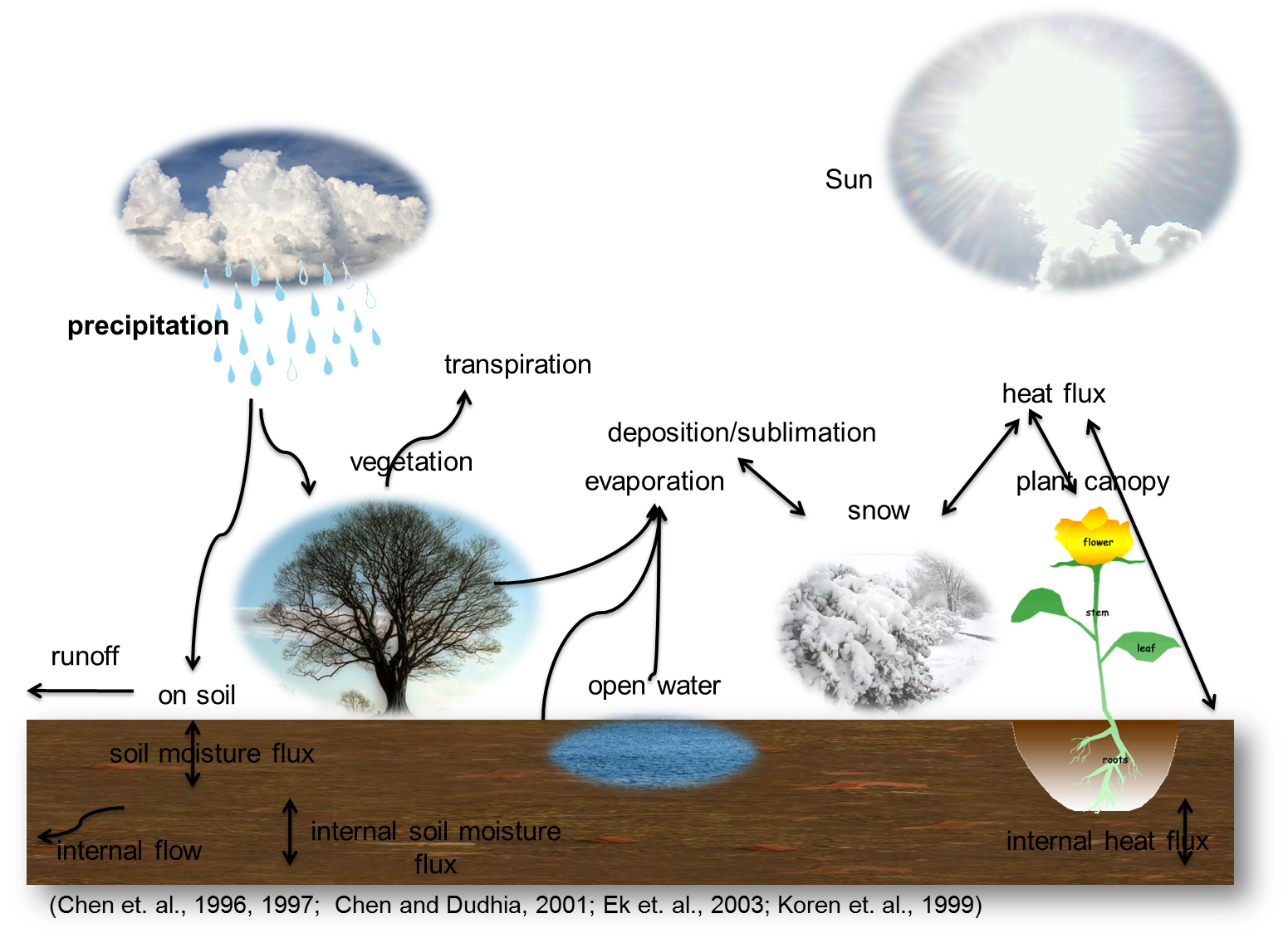Water Cycle
Learning Objectives
Water is one of the most important elements that we need to survive. All living organisms depend on water, including us. It is important to know where the water comes from and how it connects to the ocean, land and atmosphere. As we know, water consists of different forms such as snow, hail, rivers, lakes, and rain. The water cycle describes how water evaporates from the surface of the earth, rises into the atmosphere and cools and condenses into rain or snow in clouds, and falls again to the surface as precipitation.
Starting from rivers, lakes and other bodies of water, when temperature increases as the sun heats the water, water begins to evaporate. When water evaporates, the water is in the form of water vapor in the air. Water is also able to evaporate through plants and soil through the process called evapotranspiration. More specifically, when water is evaporated through the plant’s leaves or stroma, it’s called transpiration.

Once water vapor is up in the atmosphere, water vapor can condense. Clouds are formed as water vapor that is cooled and condenses into droplets and ice crystals. In this process, water vapor turns into liquid water droplets in the air, which creates clouds. When clouds get heavy enough or what we would say, cloud particles, they will fall out as rain, snow or hail.
Precipitation is any kind of weather condition that causes water to fall down. Once clouds are heavy enough, they would release a form of water. It can take in the form of snow, rain, or hail. This process of water droplets or other forms that falls is precipitation

Once water in it’s form has fallen, water begins to move across the land. This is considered runoff. There are two ways water can go through the runoff phase, surface runoff and channel runoff. Surface runoff is also called overland flow as water flows over the earth’s surface. This can occur when soil is saturated to its full capacity and cannot absorb water into its soil fast enough while it rains or storm. We notice this when we see puddles in grass areas. Channel runoff is where water flows into streams and lakes and other large bodies of water. Water can become stored in large bodies of water.
This is the water cycle as water from the surface of the earth and large bodies of water will again be evaporated into the air and repeated through the same process.


